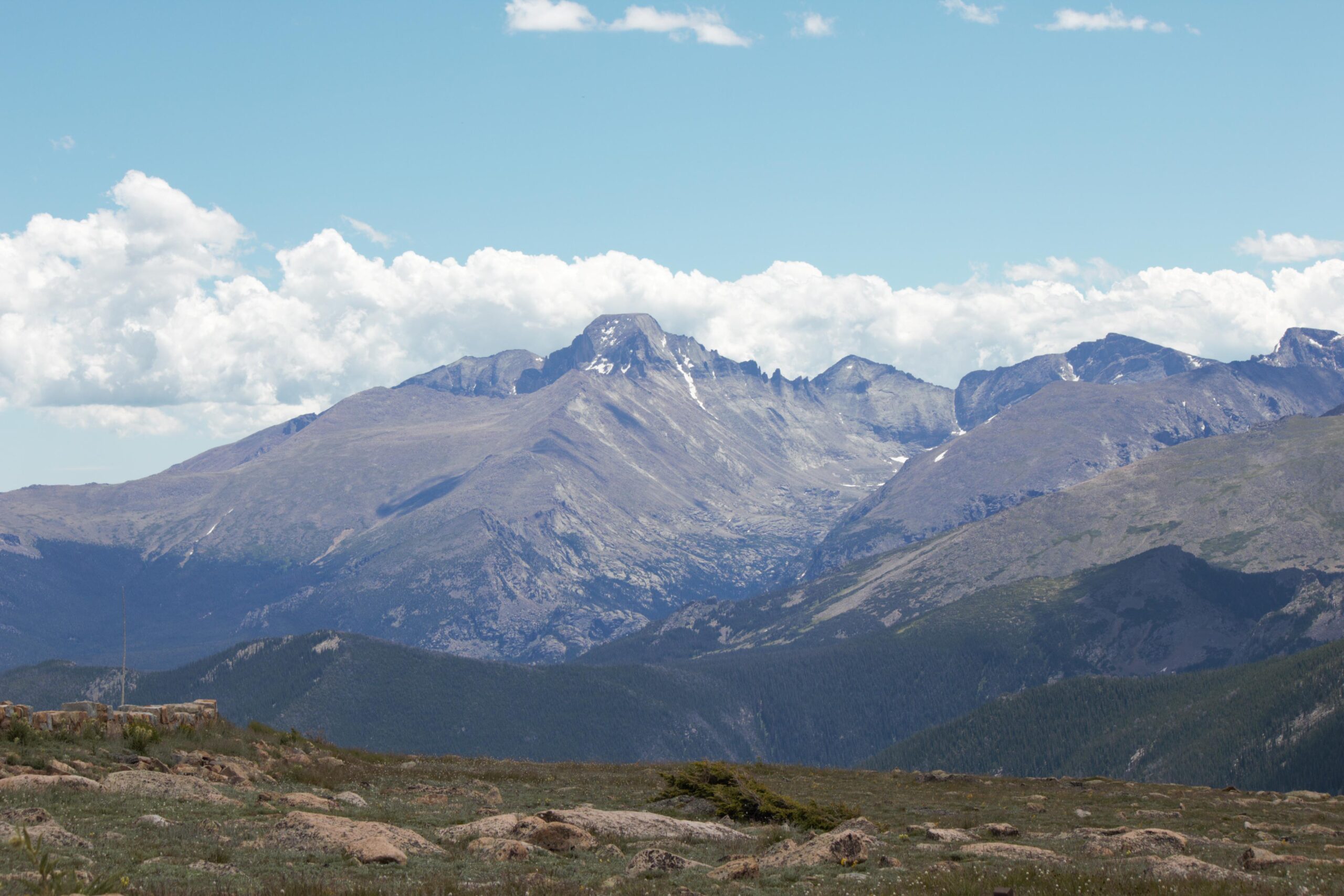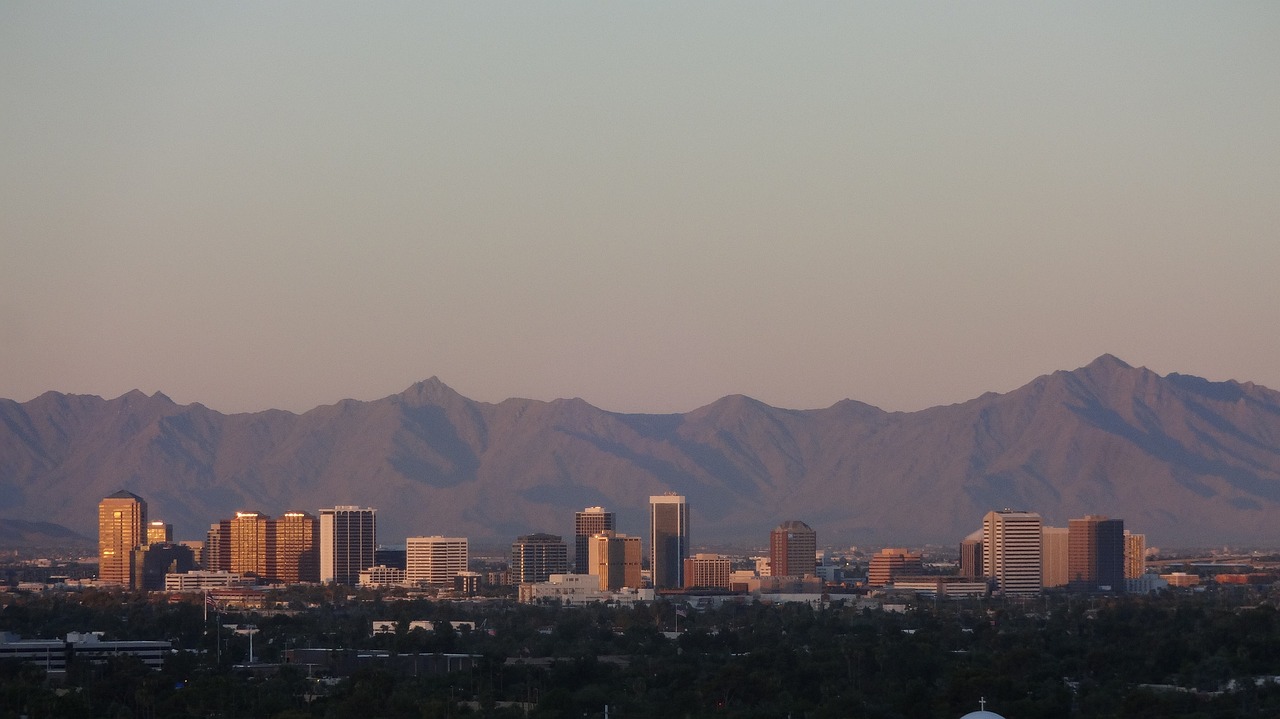Finding the perfect vacation spot can be tough. Rocky Mountain National Park is a gem in Colorado with mountains, wildlife, and trails. This blog will show you its best parts and how to enjoy them.
Keep reading for exciting details.
Key Takeaways
- Rocky Mountain National Park is in Colorado with mountains, wildlife, and trails for all skill levels.
- The park includes regions like Moose and Big Meadows, the Alpine Region, Wilderness Areas, and has over 100 named waterfalls.
- You can hike over 350 miles of trails or enjoy scenic drives like Trail Ridge Road.
- Wildlife watching is popular with animals like elk, moose, and bighorn sheep.
- Camping is available in five campgrounds or through backcountry permits for a closer experience with nature.
Regions of Rocky Mountain National Park

Discover the diverse regions of Rocky Mountain National Park, from the moose-filled meadows to the rugged alpine terrain. Immerse yourself in the wilderness areas and explore the heart of the park for a true taste of its natural beauty.
Moose and Big Meadows
Moose and Big Meadows is a special place in Rocky Mountain National Park. Here, you can see moose wander through vast, open fields. The meadows are green and wide. They offer great spots for watching wildlife and enjoying nature.
Visitors love this area for its scenic beauty and chance to see animals up close. Big Meadows also has trails easy enough for most people to walk on. This makes it perfect for families looking to explore the outdoors together.
Alpine Region
The Alpine Region in Rocky Mountain National Park takes you above the tree line, to an elevation where trees can’t grow. Here, it’s all about wide-open spaces and big skies. You’ll find yourself at least 11,000 feet up.
The air feels thinner, cooler. This place is home to the alpine tundra ecosystem. It’s a land of extreme weather but also extreme beauty.
You can explore Trail Ridge Road to see this unique area without even leaving your car. In summer, wildflowers paint the ground in bright colors. Marmots and ptarmigans are common sights.
They’ve adapted to live here all year long. For hikers seeking adventure, trails like the Ute Crossing offer unforgettable views of Colorado’s high peaks and vast landscapes.
Wilderness Areas
Moving from the high, open spaces of the Alpine Region, we enter the Wilderness Areas. These parts are where nature runs wild and free. Here, Rocky Mountain National Park protects over 249,000 acres of untouched land.
This vast area is a safe home for many plants and animals. It’s also a place where people can explore without finding roads or buildings.
Visitors love these areas because they offer a true sense of adventure. You can hike deep into forests or climb up rocky peaks. Each step takes you further away from the busy world outside the park.
In these spots, it’s just you and the wilderness around you.
Heart of the Park
The “Heart of the Park” is an area in Rocky Mountain National Park that encompasses lush valleys, towering peaks, and abundant wildlife. It is home to iconic landmarks such as Longs Peak, which stands at 14,259 feet and offers challenging yet rewarding hiking opportunities for adventurous visitors.
The region also includes Bear Lake, a popular starting point for numerous scenic trails leading through alpine forests and offering breathtaking views of the Continental Divide. This central area of the park provides access to diverse ecosystems, making it an ideal spot for wildlife watching and immersing oneself in the untouched beauty of nature.
Visitors can explore this central part of the park via Trail Ridge Road or Old Fall River Road, both offering awe-inspiring vistas and access to high-elevation terrain. Along these roads, travelers can experience firsthand how elevation impacts climate and vegetation as they ascend through different ecological zones.
For those seeking a deeper understanding of Rocky Mountain National Park’s natural wonders, the Heart of the Park serves as a captivating focal point where adventure meets education amidst stunning landscapes.
Waterfalls and Backcountry
Moving from the heart of the park to its more remote corners, Rocky Mountain National Park is home to breathtaking waterfalls and backcountry. The park boasts over 100 named waterfalls, including Alberta Falls near Glacier Gorge and Adams Falls on the west side.
For adventurous hikers, the backcountry offers an opportunity to explore secluded areas and discover hidden gems away from the main trails. With 415 square miles of protected land, there’s plenty of room for exploration in this rugged wilderness.
Visitors looking for a more off-the-beaten-path experience can venture into the backcountry, where they’ll find solitude and pristine natural beauty. However, it’s important to be well-prepared for these adventures as backcountry travel in Rocky Mountain National Park requires specific permits that can be obtained through the park’s website or at ranger stations.
It’s also crucial to practice Leave No Trace principles by minimizing impact and respecting wildlife while venturing into these beautiful yet delicate ecosystems.
Key Natural Features
Rocky Mountain National Park boasts the towering Continental Divide, shaped by ancient glacial movements. Its diverse geology and elevations create a range of climates and habitats for various plants and animals to thrive in.
This park’s natural features provide a unique opportunity to experience the wonders of nature up close.
Continental Divide
The Continental Divide runs through Rocky Mountain National Park. This is where water flows in different directions – to the east and west of the park. It’s a significant geographical feature that showcases the park’s unique natural landscape, separating watersheds of the Pacific Ocean and Atlantic Ocean.
Visitors can explore this important landmark while enjoying breathtaking views and learning about its impact on the ecosystem.
The Continental Divide crosses along high peaks like Flattop Mountain, Hallett Peak, and many others. It’s a notable part of the park’s allure as it serves as a natural boundary for various ecosystems within Rocky Mountain National Park.
Glaciation and Geology
Rocky Mountain National Park has fascinating geology shaped by glaciers. The park’s striking landscape, including steep cliffs and rugged valleys, was formed during the last Ice Age.
Glaciers carved out deep canyons, U-shaped valleys, and cirques in the exposed granite bedrock over thousands of years. As evidence of this glacial activity, visitors can see polished rocks and boulders scattered throughout the park.
The park’s unique geological formations also stem from ancient seas that once covered the region millions of years ago. Fossilized remains of marine creatures like ammonites can still be found embedded in the rocks.
Visitors will discover various types of rock formations such as schist, gneiss, and granite as they explore Rocky Mountain National Park’s diverse geological features.
Elevation and Climate
Rocky Mountain National Park ranges from 7,860 feet to over 14,000 feet above sea level. The higher you climb, the cooler it gets. Lower elevations have milder weather while temperatures drop at higher altitudes.
Due to the park’s varying heights, there’s a diverse climate throughout the area.
The park has three main climate zones: montane (5,600-9,500 ft), subalpine (9,500-11,400 ft), and alpine tundra (above 11,400 ft). These differences in elevation create a variety of habitats for plants and animals.
It is also important to note that snow can fall any month of the year in this high altitude environment.
Ecosystems and Wildlife
The park boasts diverse ecosystems and abundant wildlife, varying from the lower montane zone to the high alpine tundra. It’s an excellent opportunity for visitors to observe and appreciate nature in its rawest form.
Montane Zone
The Montane Zone in Rocky Mountain National Park is found at elevations ranging from 5,600 to 9,500 feet. This zone is home to diverse ecosystems including meadows, ponderosa pine forests, and quaking aspen groves.
Visitors can spot elk, mule deer, and black bears while exploring the trails that wind through this vibrant landscape. It’s a great place for scenic drives and wildlife watching too.
This zone provides opportunities for visitors to witness a variety of wildflowers in bloom throughout the summer months. There are also numerous hiking trails where you can experience this unique ecosystem up close.
With its moderate elevation, it offers an ideal climate for both flora and fauna to thrive year-round.
Subalpine Zone
The Subalpine Zone in Rocky Mountain National Park is found between 9,000 and 11,000 feet in elevation. This region features dense forests of fir and spruce trees, which thrive in the cooler temperatures here.
Visitors can spot diverse wildlife such as elk, mule deer, and black bears within this zone. The area offers picturesque trails like the Ute Trail and Mount Ida where hikers can revel in stunning views of the park’s alpine landscape.
In the Subalpine Zone, visitors can also witness a variety of wildflowers that bloom during the summer months, adding vibrant colors to this high-altitude environment. It’s essential for vacationers to be aware of altitude sickness when exploring this zone due to its higher elevation.
Alpine Tundra
Descending from the Subalpine Zone, you’ll find yourself in the Alpine Tundra of Rocky Mountain National Park. At this high elevation, above the tree line at approximately 11,000 feet, you’ll encounter a harsh environment with intense winds and cold temperatures.
The tundra is a fragile ecosystem where plants like cushiony moss campion and alpine forget-me-nots have adapted to survive extreme conditions. Wildlife such as pikas and bighorn sheep are well-suited for this habitat due to their thick fur and sturdy build.
The thin soil in the Alpine Tundra sustains only low-growing vegetation but bursts into colorful wildflowers during spring and summer months – painting an exquisite view across the landscape.
This unique environment sets the stage for breathtaking vistas of jagged peaks against clear blue skies stretching out endlessly before your eyes.
Riparian Zone
The Riparian Zone in Rocky Mountain National Park is the area around streams, rivers, and wetlands. It’s a vibrant place where you’ll find diverse plant life such as willows, cottonwoods, and wildflowers along the water’s edge.
This zone provides crucial habitat for various wildlife species like beavers, moose, and birds. The abundance of moisture supports a rich ecosystem that contrasts with the dryness of other park regions.
Visitors can spot animals like elk and deer near the riparian areas during dawn and dusk when they come to drink from the flowing waters. It’s an excellent place for nature enthusiasts to observe wildlife in its natural habitat while enjoying the soothing sounds of running water.
Additionally, hikers will find serene trails alongside these zones offering peaceful strolls amidst lush vegetation and picturesque landscapes.
Recreational Activities
Explore the network of hiking trails that lead you through forests, meadows, and up to stunning vistas. Watch for wildlife in their natural habitats while enjoying camping under the starry skies.
Hiking Trails
Rocky Mountain National Park offers a variety of hiking trails that cater to all levels of hikers. The park boasts over 350 miles of trails, from easy strolls to challenging ascents. Here are some noteworthy hiking trails to explore at the park:
- Bear Lake Trail: A short, easy loop around a picturesque lake, perfect for families and those looking for a leisurely stroll.
- Emerald Lake Trail: A moderate hike leading to stunning alpine lakes, with breathtaking views of rugged peaks along the way.
- Sky Pond Trail: A more strenuous trek that rewards hikers with panoramic vistas and access to beautiful subalpine lakes.
- Longs Peak Trail: One of the most challenging hikes in the park, culminating in an ascent of the park’s highest peak, Longs Peak.
- Ute Trail: Offering sweeping views of the Continental Divide, this moderately difficult trail is ideal for experiencing the park’s high alpine environment.
- Alberta Falls Trail: A relatively easy hike that leads to a magnificent waterfall, providing a refreshing and scenic stop along the way.
- Chasm Lake Trail: This demanding trail takes hikers through diverse landscapes and ends at the stunning Chasm Lake nestled beneath towering cliffs.
Whether you’re seeking a peaceful amble or a rigorous mountaineering adventure, Rocky Mountain National Park has a trail suited to your preferences and abilities.
Wildlife Watching
The Rocky Mountain National Park is a perfect place for wildlife watching. You can spot elk, mule deer, and bighorn sheep in the lower regions of the park. As you move higher, keep an eye out for pikas and yellow-bellied marmots in the alpine tundra.
Birdwatchers will be thrilled to see majestic golden eagles soaring above, along with colorful mountain bluebirds perched on branches.
In addition to these animals, moose are frequently seen around Big Meadows area while black bears tend to wander near Estes Park and Grand Lake entrances. Keep your binoculars handy as this national park boasts more than 280 species of birds, making it a paradise for bird enthusiasts.
Wildlife spotting opportunities are abundant throughout all parts of the park so make sure you have your camera ready!
Camping
Rocky Mountain National Park offers a fantastic camping experience with stunning views and diverse ecosystems. Here’s what you can expect:
- Campgrounds are available on a first-come, first-served basis and can fill up quickly during peak seasons.
- There are five established campgrounds within the park, offering a total of over 500 campsites for tent and RV camping.
- Backcountry camping is allowed with a permit, allowing for a more secluded experience in the park’s wilderness.
- Amenities at campgrounds include fire pits, restrooms, and potable water, providing essential comforts for your stay.
- Camping fees vary based on the campground and amenities provided; reservations are recommended to ensure availability.
These details help navigate your camping adventure in Rocky Mountain National Park, ensuring an enjoyable and memorable experience amidst nature’s grandeur.
Scenic Drives
Rocky Mountain National Park offers stunning scenic drives that showcase the park’s diverse landscapes and natural beauty:
- Trail Ridge Road: Known as one of the most scenic drives in America, this iconic route takes you above timberline, offering breathtaking panoramic views of the Rocky Mountains. The road reaches an elevation of 12,183 feet, making it the highest continuous paved road in the United States.
- Old Fall River Road: A historic and unpaved road winding through alpine meadows and forests, providing a slower-paced, more intimate experience with nature. This road offers captivating vistas and access to numerous hiking trails and picnic spots.
- Bear Lake Road: This picturesque drive provides access to several trailheads leading to beautiful alpine lakes, including the popular Bear Lake. The road offers stunning views of mountain peaks and lush meadows, making it a great choice for a leisurely drive or a starting point for outdoor adventures.
- Moraine Park Road: Offering glimpses of verdant meadows dotted with wildflowers and surrounded by rugged peaks, this serene drive is perfect for wildlife watching and enjoying the tranquility of the park’s lower elevations.
- Fall River Road: Meandering along the Fall River through montane landscapes, this scenic drive provides opportunities for spotting wildlife such as elk and deer while immersing visitors in the sights and sounds of Rocky Mountain National Park’s diverse ecosystems.
Explore these enchanting scenic drives to immerse yourself in the unmatched beauty of Rocky Mountain National Park’s natural wonders.
Planning Your Visit
Plan your visit wisely by considering visiting during the less crowded times, and don’t miss out on exploring the majestic Trail Ridge Road for a breathtaking experience. Read more about practical tips and insider insights to make the most of your trip.
Best Times to Visit
The best times to visit Rocky Mountain National Park are:
- Late spring and early fall offer comfortable temperatures for hiking and outdoor activities.
- September and October provide stunning foliage as the aspen trees turn golden.
- Weekdays generally have fewer crowds, especially during peak summer months.
- Consider visiting during sunrise or late afternoon to experience the park with softer light and fewer people around.
- Keep in mind that snow can arrive as early as September, so be prepared for changing weather if visiting in the fall.
Trail Ridge Road Access
Trail Ridge Road is the highest continuous paved road in the United States, reaching an impressive elevation of over 12,000 feet. The road provides access to a high alpine environment with sweeping vistas and numerous recreational opportunities.
This iconic route typically opens from late May through October due to heavy snowfall at higher elevations. It’s a popular scenic drive offering breathtaking views of the Rocky Mountains and its diverse ecosystems.
Visitors can spot wildlife like elk and bighorn sheep along this route. Additionally, there are several pull-offs for taking photographs or simply enjoying the panoramic scenery.
The Trail Ridge Road connects Estes Park on the east and Grand Lake on the west, making it an essential thoroughfare for exploring Rocky Mountain National Park’s spectacular landscapes.
Estes Park and Grand Lake Entrances
Explore Rocky Mountain National Park through the Estes Park and Grand Lake entrances. The park’s main entrance is in Estes Park, from where you can access the renowned Trail Ridge Road, reaching an elevation of over 12,000 feet.
Drive through alpine landscapes and experience breathtaking vistas of the Continental Divide.
On the other hand, the Grand Lake entrance provides access to lesser-visited areas of the park. You’ll encounter lush forests, serene lakes, and diverse wildlife. This gateway is ideal for those seeking a peaceful connection with nature away from crowds.
Whichever entrance you choose, both offer unique experiences within this remarkable national park.
Conclusion
Discover the diverse regions of Rocky Mountain National Park. From Moose and Big Meadows to the Alpine Region, experience a range of natural beauty. Engage in recreational activities like hiking and wildlife watching amidst breathtaking landscapes.
Plan your visit strategically for an unforgettable vacation adventure in Colorado’s wilderness.
FAQs
1. What can I do at Rocky Mountain National Park?
At Rocky Mountain National Park, you can hike beautiful trails, see stunning views, and enjoy wildlife. You can also camp under the stars or drive along scenic roads to take in the sights.
2. When is the best time to visit Rocky Mountain National Park?
The best time to visit is during summer, when the weather is warm and most trails are open. Fall offers amazing colors too, while spring brings blooming flowers. Winter is great for snow sports but some areas may close.
3. Are there any fees to enter Rocky Mountain National Park?
Yes, there is an entrance fee for vehicles and people on foot or bike. The fee helps maintain park facilities and services so everyone can enjoy their visit.
4. Can I bring my dog to Rocky Mountain National Park?
You can bring your dog but with some rules! Dogs must stay on a leash and are only allowed in certain areas like parking lots or paved paths; they can’t go on most trails or into backcountry areas where wildlife roams freely.







Leave a Reply